Tenerife wildfire: Thousands flee as firefighters battle ‘out of control’ blaze
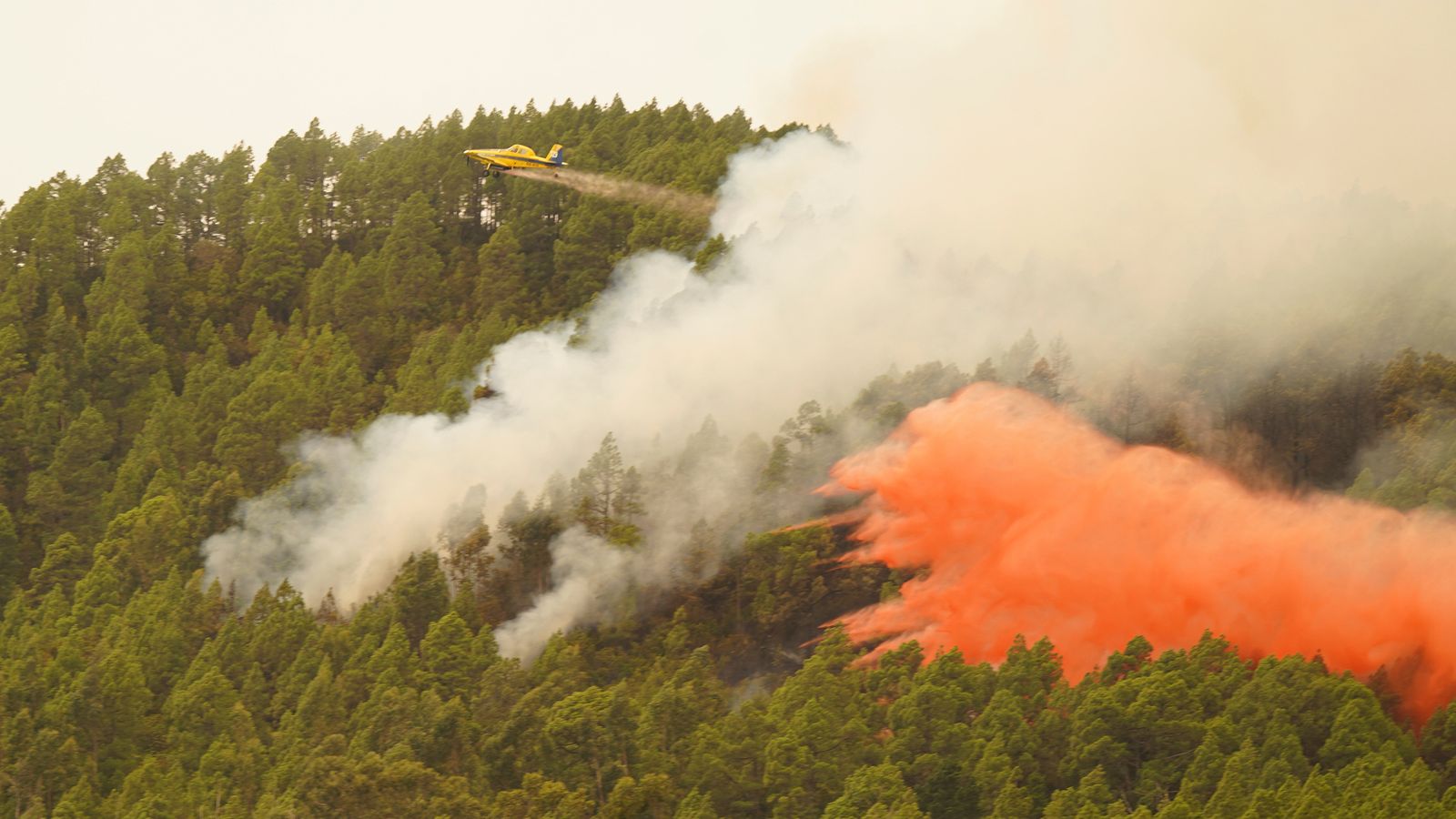
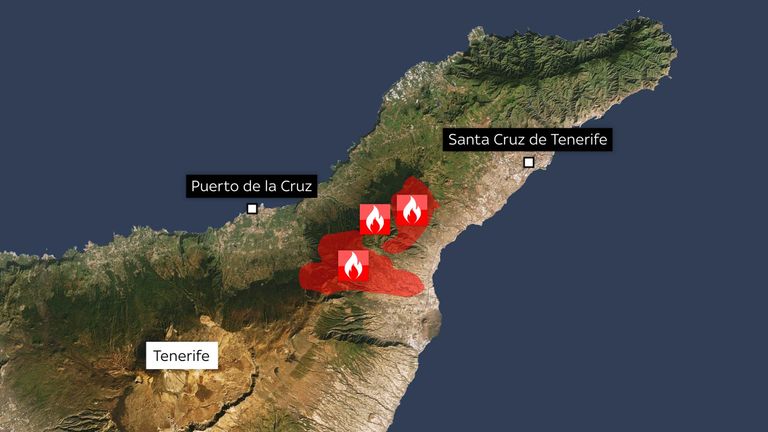
Thousands of people have had to flee their homes on Tenerife as firefighters and the army struggle to contain an “out of control” wildfire.
Nearly 4,500 people were ordered to leave villages and campsites after the fire started on Wednesday, with thousands more told to stay inside.
The blaze has already burned at least 6,425 acres.
“This is probably the most complicated blaze we have had on the Canary Islands, if not ever, in at least the last 40 years,” said regional leader Fernando Clavijo.
He said the fire was currently “out of control” and that it was a race against time before temperatures increase again at the weekend.
Santa Cruz, the island’s capital, is 12 miles (20km) from the flames.
Tenerife‘s tourism office said the fire was not near any of the main holiday areas and cities, which are said to be operating normally.
Read more:
Will ‘prime fire season’ change our summer holidays forever?
What is the Fire Weather Index and how does it work?
Waterbombing planes have managed to stabilise the fire south of Mount Teide, Spain’s highest peak, but it remained out of control on the northern flank.
Advertisement
“When you go outside you start suffocating. It’s as if you have something stuck in your throat,” said Alba Gil, 37, who lives in the village of La Esperanza.
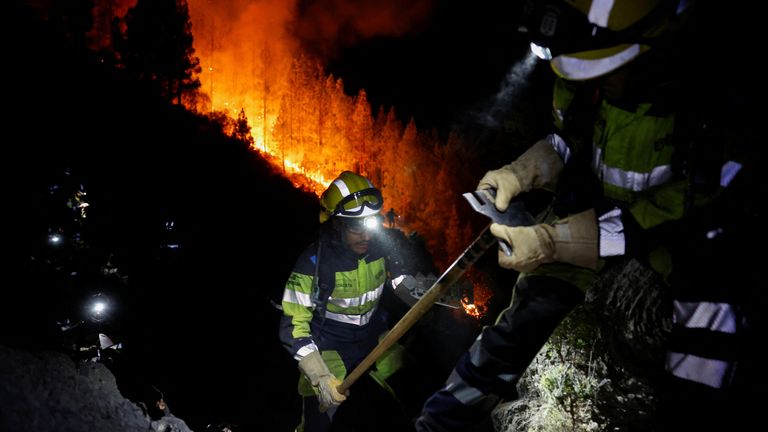

More than 3,800 people have been told to stay at home due to poor air quality, said civil protection chief Montse Roman, and more evacuations could follow.
Access to the mountains has been shut off, but the island’s two airports were said to be operating normally.
Seventeen aircraft and about 350 firefighters and military personnel are involved in the firefighting effort so far.


Mr Clavijo said the fire’s perimeter was nearly 19 miles (30km) long.
“We are watching the big mountain and the blaze, we saw this firewall and we’ll see if they can control it… the situation seems pretty bad,” said local resident Celestino Suarez, 53.
A heatwave of more than 40C (104F) on the island last week left much of the ground bone dry.
Please use Chrome browser for a more accessible video player
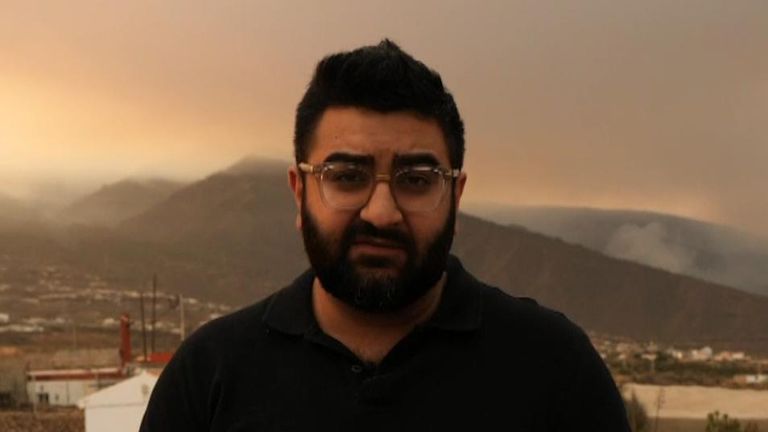
0:48
Sky News’ correspondent Inzamam Rashid reports from Tenerife, Spain.
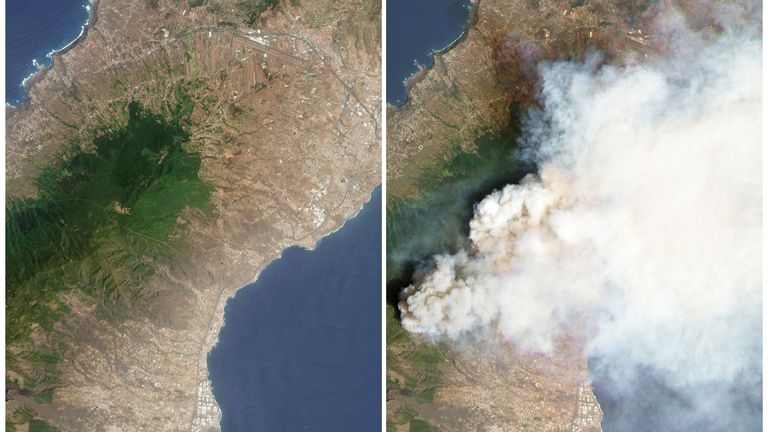
Tenerife is the latest place to experience an unusually serious wildfire this summer.
A blaze on nearby La Palma last month affected about 11,000 acres and led to more than 2,000 people being led to safety.
Click to subscribe to the Sky News Daily wherever you get your podcasts
The most devastating wildfire of recent months has been in Hawaii where at least 106 people died when flames ripped through a popular town on Maui.
Scientists say climate change is helping make extreme weather events more frequent.